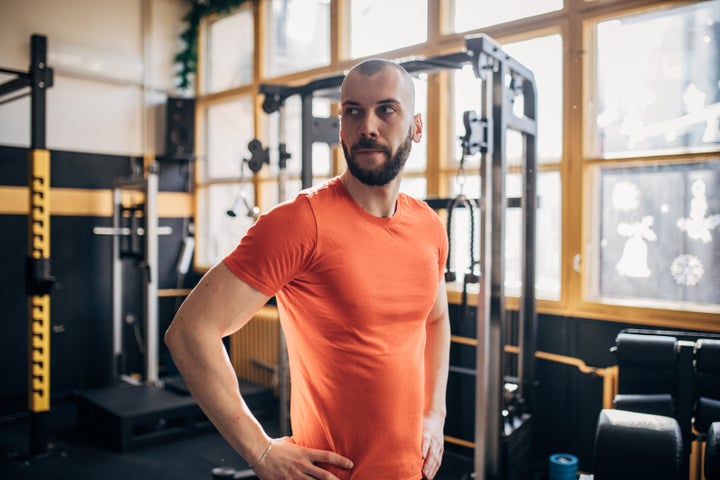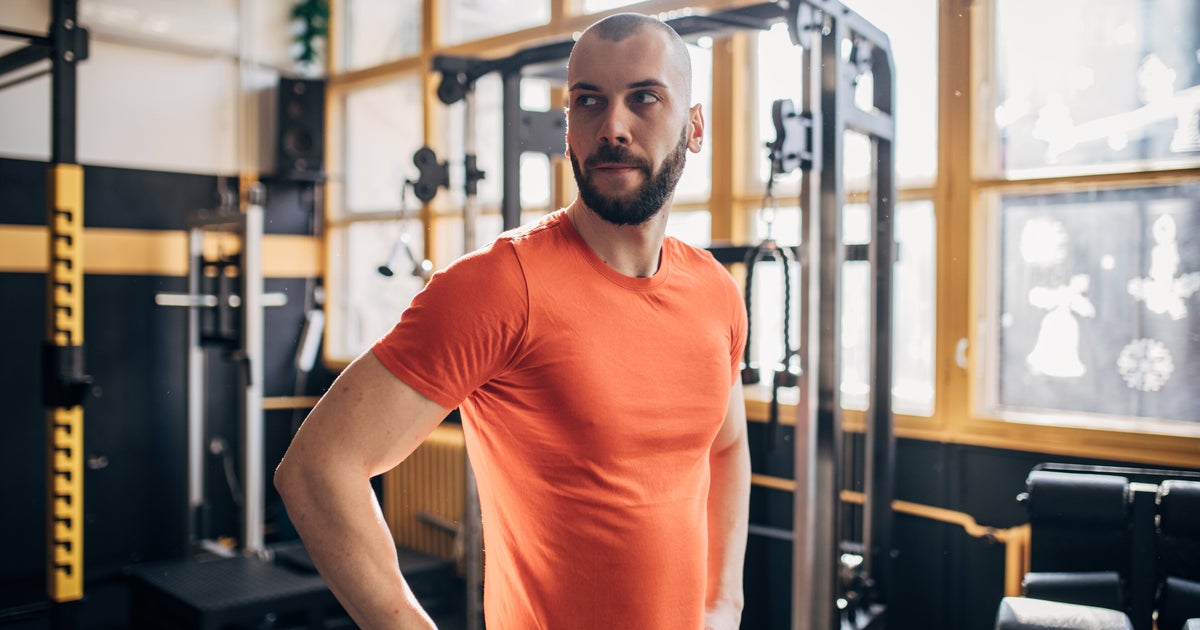When it comes to men’s fitness routines, it’s probably safe to say each one looks a bit different. Some men may prefer exercise products that help them get “fit” while doing something else. Some may have “gym anxiety,” keeping their workouts short, off to the side or at home. Some may focus more on one body part or type of movement, or prefer one machine to its counterpart.
But when it comes to a common no-go that many men do at the gym, physical therapists agree on a clear answer. Ahead, they share the the major fitness mistake, its risks and how to work out in a way that’s both effective and safe.
Men often overly focus on muscle gain and ignore ‘movement quality.’
The common fitness mistake among men is “focusing solely on strength or hypertrophy (i.e., muscle gain) without building a foundation of movement quality,” said Andy Fata-Chan, a New York City-based physical therapist, coach and founder of Moment Physical Therapy & Performance. “It’s not that focusing on strength and muscle gain is bad — it’s the lack of variability in a person’s program.”
He explained that there are three different planes of motion, which include the sagittal (up and down) motion, frontal (side to side) motion and rotational (in a circle) motion. “Most people do sagittal-plane-focused exercises on two legs without incorporating all the other variations that can improve their foundation,” Fata-Chan said.
Some helpful exercises and movements, broken down into the different planes of motion, include:
Sagittal (up and down): back squats and bicep curlsFrontal (side to side): arm and leg raises to the side, side shuffles, side lunges and side bendsRotational/transverse (sometimes in a circle): spinal rotation, limb rotation and shoulder and hip movements, such as using a bench press, doing a pushup, or hip abductions/adductions
Renee Moran, a physical therapist and the clinical director at Fyzical Twin City Bangor in Maine, has also seen this mistake and its risks.
“Throughout my 23-year career, I’ve seen firsthand how overuse injuries and chronic pain are common among men who prioritize muscle gain over movement quality,” she said. “Many aim to build strength quickly and lift heavy weights with poor form and minimal attention to proper mechanics.”
“Movement quality refers to how efficiently and safely your body performs fundamental patterns like squatting, hinging, pushing and rotating,” Fata-Chan said.
Dan Ginader, a physical therapist with Mims Method Physical Therapy in New York, gave an example. “If you take someone with terrible squat form and load them with a weighted barbell, it won’t take long before an injury develops,” he said.
This is especially key for people who use super-heavy weights, Ginader continued, who “can’t afford for even one little part of the movement to fall out of alignment.”
According to Moran, hallmarks of “good” movement include:
Proper alignment and symmetry of the body Coordination and control between muscle groupsIntegration of strength, balance, flexibility and agility
“It involves using the correct muscles in the proper sequence, while stabilizing and supporting joints to add compensation,” she added. “Ultimately, quality movement is when the body functions as one cohesive unit rather than as isolated muscle groups.”
 Focusing solely on muscle gain isn’t going to help you in the long run, according to the pros.
Focusing solely on muscle gain isn’t going to help you in the long run, according to the pros.
There are risks when you sacrifice movement quality in your workouts.
Focusing purely on building muscle and forgoing everything else is secretly ingrained in us. There’s little doubt that the temptation behind this pitfall stems from cultural messaging. If this mistake sounds familiar to you, know that physical therapists understand the desire and the pressure behind it.
“I think it’s super easy to want to jump straight to the part where people will notice you are working out by building muscle,” Ginader said. “Social media and shows like ’Love Island’ have conditioned men to believe that if they want to be attractive, you have to be built like a linebacker on steroids.”
But when you focus too much on aesthetics, he continued, you naturally bypass the basic steps that lead to sustainable and healthy habits — and that raises your injury risk.
“Lifting weights on a consistent basis without focusing on flexibility, mobility, programming or recovery can lead to injury and burnout,” Ginader said.
Examples of those risks, according to physical therapists, include:
Joint injuries, as serious as bulging or herniated discsSoft tissue injuriesMuscle imbalances that increase injury riskReduced functional fitness, or decreased efficiency in everyday activities Plateaued progressLess range of motion
“If you’re constantly placing stress on the same tissue and utilizing the same exact patterns, this can lead to overuse injuries,” Fata-Chan added. “There’s a big reason why professional and Olympic athletes take a break after competition to do things that build general fitness and look nothing like their sport or normal program.”
Try some simple adjustments to build more movement quality into your workouts.
When it comes to the common mistake of decentering movement quality, the solution is obvious: Add it in.
“Incorporate mobility work, stability drills and dynamic warmups into your routine,” Fata-Chan said. “Slow down your lifts, prioritize control over load, and work with a coach or physical therapist when possible. A well-rounded program should include flexibility, balance and recovery — not just strength.”
He shared examples of mobility work, stability drills and dynamic warmups that he recommends:
Single-leg calf raises to improve ankle mobilitySplit squat isometric holds with 90-degree angles to load the quadsLong level bridges to focus on hip extension and stability
Fata-Chan also emphasized knowing what the correct form looks like for you, because it doesn’t look the same for everyone. “What might be useful for one person can be detrimental for another,” he said.
For example, someone whose hip sockets are more internally rotated would need a narrower squat stance.
Moran encouraged starting with lighter resistance or weights, incorporating mobility and stability work (which are “as important as raw strength,” she said), seeking professional guidance and thinking long term.
20 Years OfFreeJournalism
Your SupportFuelsOur Mission
Your SupportFuelsOur Mission
For two decades, HuffPost has been fearless, unflinching, and relentless in pursuit of the truth. Support our mission to keep us around for the next 20 — we can’t do this without you.
We remain committed to providing you with the unflinching, fact-based journalism everyone deserves.
Thank you again for your support along the way. We’re truly grateful for readers like you! Your initial support helped get us here and bolstered our newsroom, which kept us strong during uncertain times. Now as we continue, we need your help more than ever. .
We remain committed to providing you with the unflinching, fact-based journalism everyone deserves.
Thank you again for your support along the way. We’re truly grateful for readers like you! Your initial support helped get us here and bolstered our newsroom, which kept us strong during uncertain times. Now as we continue, we need your help more than ever. .
Already contributed? Log in to hide these messages.
“The way you move and train in your youth impacts your function and health as you age,” Moran continued. “Protecting mobility now prevents chronic pain and loss of independence later.”
Ginader encouraged starting small, not being afraid or embarrassed to use lighter weights, asking people you trust for advice and hiring a personal trainer if possible.
“It’s important to understand how to best move your body before you start to load it,” he said. “Once you are confident in basic movements, feel free to load at a sustainable rate.”

